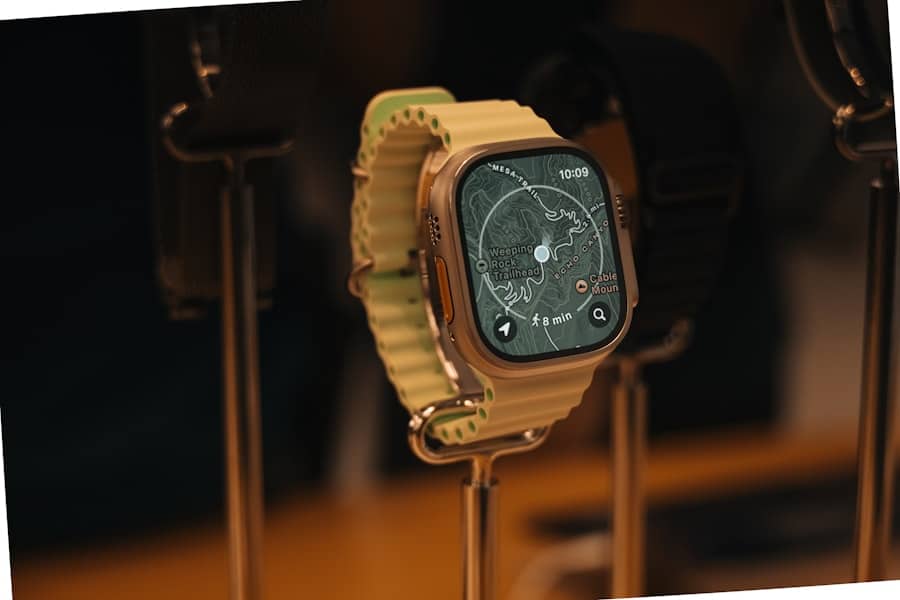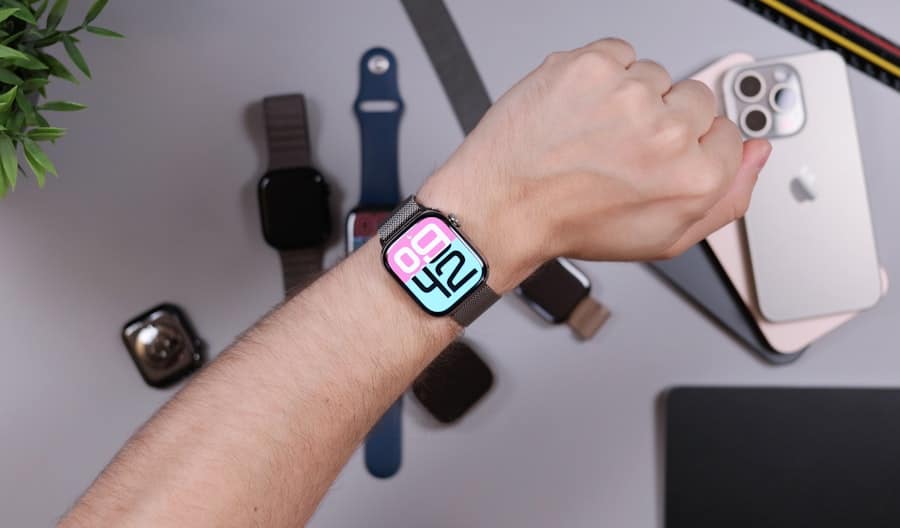Wearable technology has undergone a remarkable transformation since its inception, evolving from rudimentary devices to sophisticated gadgets that seamlessly integrate into our daily lives. The journey began in the 1960s with the invention of the first wearable computer, which was a cumbersome device that required significant technical knowledge to operate. Fast forward to the 21st century, and we see a plethora of devices that not only serve functional purposes but also cater to aesthetic sensibilities.
The introduction of smartwatches, fitness trackers, and augmented reality glasses has revolutionized how we interact with technology, making it more accessible and user-friendly. The evolution of wearable technology can be traced through several key milestones. In the early 2000s, the launch of devices like the Fitbit marked a significant shift towards health and fitness tracking.
These devices were designed to monitor physical activity, heart rate, and sleep patterns, appealing to a growing demographic interested in personal health management. As technology advanced, so did the capabilities of these wearables. The introduction of smartwatches, such as the Apple Watch in 2015, brought a new level of sophistication, allowing users to receive notifications, track workouts, and even make phone calls directly from their wrists.
This convergence of functionality and convenience has paved the way for a new era in wearable technology.
Key Takeaways
- Wearable technology has evolved to seamlessly blend fashion and function.
- Next-gen designs prioritize user experience through innovative materials and aesthetics.
- Health and wellness features are increasingly integrated into wearable devices.
- Collaboration between fashion and technology drives future wearable innovations.
- Next-gen wearables are transforming the fashion industry by merging style with smart functionality.
The Intersection of Fashion and Technology
The intersection of fashion and technology is a dynamic space where creativity meets innovation. Designers are increasingly recognizing the potential of integrating technology into their creations, leading to a new wave of fashion that is not only stylish but also functional. This fusion has given rise to smart textiles and garments that can monitor health metrics or adapt to environmental conditions.
For instance, companies like Wearable X have developed yoga pants embedded with sensors that provide real-time feedback on posture and alignment, merging fitness with fashion in an unprecedented way.
The partnership between Google and Levi’s resulted in the creation of the Jacquard jacket, which allows wearers to control their smartphones through gestures on the fabric.
Such innovations highlight how technology can enhance everyday clothing, making it more interactive and engaging. As consumers become more tech-savvy, the demand for fashionable wearables that do not compromise on style is on the rise, prompting designers to think outside traditional boundaries.
How Next-Gen Wearable Design Enhances User Experience

Next-generation wearable design focuses on enhancing user experience by prioritizing comfort, functionality, and ease of use. One significant advancement is the development of intuitive interfaces that allow users to interact with their devices effortlessly. Touchscreens, voice commands, and gesture controls have become standard features in modern wearables, enabling users to navigate through applications and settings with minimal friction.
For example, smartwatches now offer customizable watch faces and app layouts that cater to individual preferences, making them not just tools but personalized accessories. Additionally, advancements in artificial intelligence (AI) have played a crucial role in improving user experience. Wearables equipped with AI can learn from user behavior and provide tailored recommendations based on individual habits and preferences.
For instance, fitness trackers can analyze workout patterns and suggest personalized training regimens or recovery strategies. This level of customization enhances user engagement and satisfaction, as individuals feel that their devices are attuned to their specific needs rather than offering a one-size-fits-all solution.
The Role of Materials and Fabrics in Next-Gen Wearable Design
The choice of materials and fabrics is pivotal in the design of next-gen wearables, influencing both functionality and comfort. Traditional materials are being replaced or enhanced with innovative textiles that offer unique properties such as moisture-wicking, breathability, and even conductivity. For example, researchers are developing fabrics embedded with conductive fibers that can transmit data from sensors woven into the material.
This allows for the creation of garments that can monitor vital signs without the need for bulky hardware.
As consumers grow increasingly aware of environmental issues, brands are responding by incorporating eco-friendly materials into their designs.
Companies like Adidas have introduced shoes made from recycled ocean plastic, while others are exploring biodegradable fabrics for smart clothing. This shift not only addresses consumer demand for sustainable products but also opens up new avenues for innovation in wearable technology.
The Importance of Aesthetics in Wearable Technology
Aesthetics play a crucial role in the acceptance and popularity of wearable technology. While functionality is essential, consumers are increasingly looking for devices that complement their personal style and enhance their overall appearance. The design language of wearables has evolved significantly, with manufacturers investing in sleek designs that resemble traditional accessories rather than clunky gadgets.
For instance, luxury brands like TAG Heuer have entered the smartwatch market with models that feature high-end materials such as stainless steel and sapphire glass, appealing to consumers who prioritize both style and performance. Furthermore, customization options have become a key selling point for many wearable devices. Brands are offering interchangeable bands, customizable watch faces, and even limited-edition designs to cater to diverse consumer tastes.
This emphasis on aesthetics not only enhances user satisfaction but also encourages individuals to wear their devices more frequently, ultimately increasing engagement with the technology.
The Integration of Health and Wellness Features in Next-Gen Wearable Design

The integration of health and wellness features into next-gen wearable design has transformed these devices into essential tools for personal well-being. Modern wearables are equipped with advanced sensors capable of tracking a wide range of health metrics, including heart rate variability, blood oxygen levels, sleep quality, and stress levels. This data empowers users to take control of their health by providing insights that were previously only available through clinical assessments.
For example, devices like the Oura Ring have gained popularity for their ability to monitor sleep patterns and provide personalized recommendations for improving sleep quality. Similarly, smartwatches now include features such as ECG monitoring and fall detection, which can alert users or emergency services in case of health emergencies. This proactive approach to health management not only enhances individual well-being but also contributes to broader public health initiatives by encouraging users to adopt healthier lifestyles.
The Future of Fashion and Technology Collaboration
The future of fashion and technology collaboration holds immense potential as both industries continue to evolve in tandem. As technology becomes more integrated into our daily lives, fashion designers are likely to explore new ways to incorporate smart features into their collections. This could lead to the emergence of entirely new categories of clothing that prioritize functionality without sacrificing style.
For instance, we may see garments that can change color based on mood or temperature or accessories that can charge devices wirelessly. Moreover, advancements in augmented reality (AR) and virtual reality (VR) are set to revolutionize how consumers interact with fashion technology. Virtual fitting rooms powered by AR could allow users to try on clothes digitally before making a purchase, reducing return rates and enhancing the shopping experience.
Additionally, fashion shows may evolve into immersive experiences where audiences can engage with collections through VR headsets, blurring the lines between physical and digital fashion.
The Impact of Next-Gen Wearable Design on the Fashion Industry
Next-gen wearable design is reshaping the fashion industry by challenging traditional notions of clothing and accessories. As consumers increasingly prioritize functionality alongside aesthetics, brands are compelled to innovate continuously or risk becoming obsolete. This shift has led to a surge in investment in research and development within fashion houses as they seek to create products that resonate with tech-savvy consumers.
Furthermore, the rise of social media influencers who promote wearable technology has amplified its visibility within the fashion landscape. Influencers often showcase how these devices can be integrated into everyday outfits, driving consumer interest and demand. As a result, collaborations between tech companies and fashion brands are likely to become more common as both sectors recognize the mutual benefits of working together to create products that appeal to modern consumers.
In conclusion, next-gen wearable design is not merely a trend; it represents a fundamental shift in how we perceive fashion and technology. As these two worlds continue to converge, we can expect exciting innovations that will redefine our relationship with clothing and accessories while enhancing our overall quality of life.
In exploring the intersection of style and practicality in wearable technology, it’s essential to consider how the latest innovations are shaping consumer preferences. A related article that delves into the top tech products of the year is available at The Best Tech Products of 2023, which highlights various gadgets that seamlessly blend functionality with aesthetic appeal, further emphasizing the trend of fashion meeting function in next-gen wearable design.
FAQs
What is next-gen wearable design?
Next-gen wearable design refers to the latest advancements in wearable technology that combine innovative functionality with stylish aesthetics. These designs focus on enhancing user experience by integrating cutting-edge materials, smart features, and ergonomic considerations.
Why is it important for fashion to meet function in wearable technology?
Fashion meeting function in wearable technology is important because it ensures that devices are not only practical and useful but also visually appealing. This balance encourages wider adoption, as users are more likely to wear devices that complement their personal style while providing valuable features.
What are some common features of next-gen wearables?
Common features of next-gen wearables include health monitoring (such as heart rate and sleep tracking), GPS, connectivity with smartphones, gesture control, flexible displays, and advanced sensors. These features are often integrated seamlessly into stylish designs.
How do designers balance aesthetics and technology in wearables?
Designers balance aesthetics and technology by using lightweight, durable materials, minimizing device size, and incorporating customizable elements. They collaborate with engineers to embed technology discreetly while maintaining comfort and visual appeal.
What materials are commonly used in next-gen wearable devices?
Materials commonly used include flexible polymers, lightweight metals like aluminum and titanium, breathable fabrics, and advanced composites. These materials help create durable, comfortable, and attractive wearables.
How does wearable design impact user comfort?
Wearable design impacts user comfort by considering factors such as weight distribution, skin-friendly materials, adjustable fittings, and ergonomic shapes. Proper design reduces irritation and fatigue, encouraging prolonged use.
Are next-gen wearables customizable?
Yes, many next-gen wearables offer customization options such as interchangeable bands, adjustable settings, and personalized interfaces. This allows users to tailor the device to their style and functional preferences.
What industries benefit from next-gen wearable technology?
Industries benefiting from next-gen wearables include healthcare, fitness, fashion, entertainment, and workplace safety. These devices provide real-time data, enhance performance, and improve overall user engagement.
How do next-gen wearables contribute to health and wellness?
Next-gen wearables contribute to health and wellness by continuously monitoring vital signs, tracking physical activity, providing reminders for healthy habits, and enabling early detection of potential health issues.
What challenges exist in designing fashionable yet functional wearables?
Challenges include integrating complex technology without compromising style, ensuring battery life and durability, maintaining affordability, and addressing privacy concerns related to data collected by the devices.

